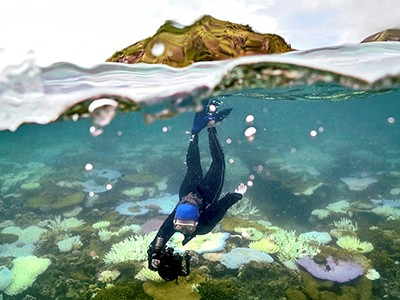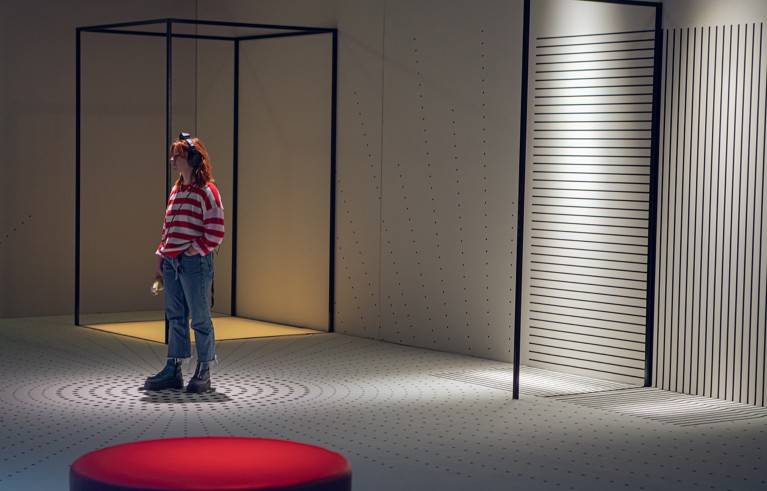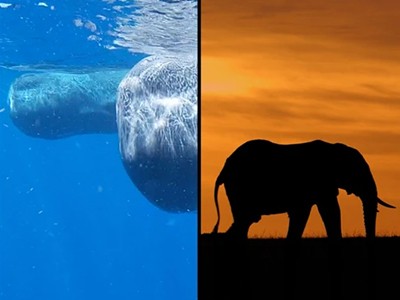Silence Cité des Sciences et de l’Industrie, Paris Until 31 August 2025
The Big Bang was spectacularly misnamed, having been “the quietest firework of all time”. Sound waves need matter to propagate through, so the explosion that created it can’t have made a din.
This misnomer, testament to our inability to imagine a Universe without noise, comes early in the exhibition Silence, which runs in Paris at the Cité des Sciences et de l’Industrie until the end of August. As well as examining how the Universe has become noisier, the exhibition explores how sound levels have risen on Earth over the past century — for as long as we have measured them, and as traffic has flooded our cities. Silence is a meditation on the thing that we’re losing as hubbub takes its place.

Humanity’s noise is the natural world’s enemy
The word ‘silence’ comes from the Latin silentium, meaning that nobody is speaking. Silence is defined by a negative or absence, in other words, yet British writer Sara Maitland didn’t experience it that way when she spent 40 days alone on Scotland’s Isle of Skye. “I increasingly identified an interior dimension to silence, a sort of stillness of heart and mind which is not a void but a rich space,” she wrote in A Book of Silence (2008), which the exhibition draws from. Her reflection provides an intriguing counterpoint to the finding, reported in 2013 and also highlighted, that mice exposed to silence generate more new brain cells than do mice exposed to a Mozart sonata.
Bad vibes
Table of Contents
‘Noise’ itself has negative connotations, we learn, being related etymologically to ‘nausea’ and ‘nuisance’, so perhaps two negatives make a positive. In any case, the line between positive and negative, between tolerable and intolerable, is clearly subjective. We know that both too much and too little noise can be harmful — that people living in very noisy environments are more susceptible to heart attacks, for instance, and that silence has been weaponized as torture. But it strikes us as quaint that people used to complain that church bells were too loud, or that cow bells stressed cows.
The World Health Organization estimates that Europeans lose nearly one million years of healthy life each year to noise pollution, and more noise-related disputes are ending up in court. People pay good money to go on silent retreats and generally don’t ask for it back if church bells intrude.
Silence is hard to pin down even when you think you’ve cornered it, however. Some individuals have gone to extreme lengths to do so, although Christopher Knight, who spent 27 years camping in the forests of Maine before being arrested in 2013 for theft, might have been yearning more for solitude than silence, given that among the objects he stole were a radio and headphones.

In a soundproof room, a person can hear only their own heartbeat and breathing.Credit: EPPDCSI, N. Breton
Besides, as Maitland also discovered, nature is loud. Waterfalls match motorways decibel for decibel, and there’s no respite, even under the sea. Parts of the marine environment are a cacophony of farting herring or teeth-gnashing clownfish, for example.
The anechoic chamber built by Orfield Laboratories in Minneapolis, Minnesota, has been called the quietest place on Earth. It is where Harley-Davidson used to test the noisiness of its latest motorcycle models, but it still absorbs only 99.9% of sound. After a few minutes in there, you apparently become aware of your own blood pulsing.
So many exhibitions that bill themselves as science-meets-art seem to neglect the second word in that formula. It’s as if the two fields of human endeavour run in parallel, like train tracks. Those that transcend that false dichotomy, acknowledging that artists and scientists are both striving for the same thing — understanding — are the ones that work, and Silence is among them. Originally conceived and presented by the team at the Museum of Communication in Bern, Switzerland, it will hopefully be snapped up by museums beyond Paris. It is presented in three languages — French, English and German.
A wintry welcome
The exhibition takes the form of an immersive experience in which you don a headset and move through an aural landscape prompted by minimal visual cues. Sensors detect your position and the narration adapts accordingly. Greeted by an image of a wintry forest and the sound of feet crumping through snow, you move on through stations interrogating the definition of silence, whether we can ever really encounter it, and if so where.

AI decodes the calls of the wild
Later, you meditate on how noise is measured and on people’s mostly failed attempts to eliminate it. You learn how silence has receded over the millennia, about its benefits and harms and about our human ambivalence towards it. Pushing through a string curtain, you land in Knight’s sylvestrian cocoon. A bit further on, you gaze at a leaden sea while listening to Maitland’s reflections. The picture and sounds of an anonymous hotel room in an anonymous city sparked, in me at least, a line of thought about sick-building syndrome as a possible explanation for ghosts.
The experience is personal and intimate, because you go at your own speed, changing direction and backtracking at will. The exhibition, in that sense, follows you. It’s absorbing and, if you hear it out, intensely rewarding — “an exhibition on silence that you really have to listen to”, as one blind visitor put it.
Sounds inside
And as you listen, you realize that we ourselves are antidotes to silence, because even when we find it on the outside, inner noises — sometimes voices — grow louder to compensate. Those noises can be inspiring and revelatory, which is why religious and creative types seek them out, or they can be hallucinatory and panic-inducing. The line between inner and outer isn’t always obvious.
We are noisy creatures even when trying to be quiet. The exhibition culminates with a performance of composer John Cage’s silent work 4’33” — in which, once the orchestra has tuned up, all you hear is the audience coughing, fidgeting and finally laughing, self-consciously, as they file out. Filing out of this exhibition, you feel both humbled by the awesome power of silence, and persuaded that the Big Bang was the last time it truly reigned.
